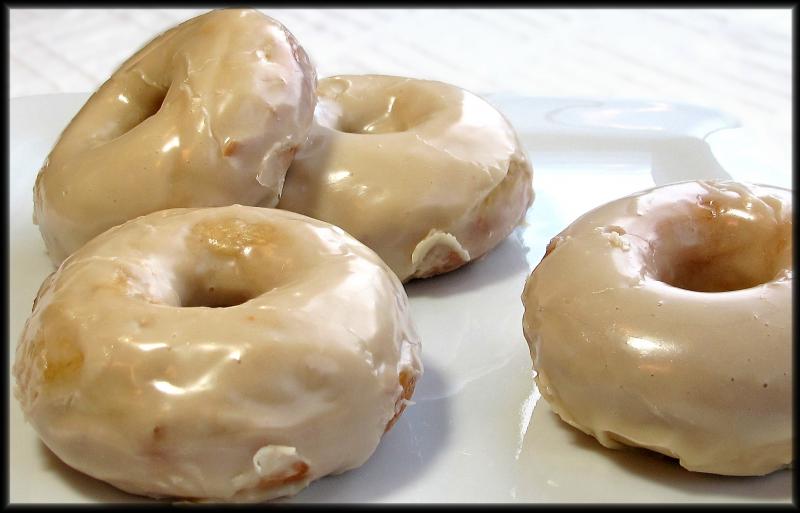Versatile vanilla adds flavor to various recipes
Some time ago, a friend sent me an article about vanilla that described the complex steps involved in the cultivation and processing to create the ubiquitous flavoring. She remarked how much more she appreciated vanilla after learning how much work goes into those familiar brown bottles on our store shelves. I experienced the same surprise and thought I’d share the story of vanilla.
Although the phrase “plain vanilla” refers to something ordinary or simple, the aroma and flavor of vanilla mixed into cake icing or ice cream is anything but dull. We can thank the Aztecs for the discovery of vanilla, which they added to their cocoa-based drink known as xocolatl (chocolate).
The long, thin pod we call the vanilla bean is produced by a pale-green orchid species (vanilla planifolia) that grows as a vine on trees. These orchid blossoms only open one day each year for just a few hours. After 12 hours without pollination, the bloom withers; with pollination, a vanilla bean forms.
Pollination in a natural setting is the job of the Melipona bee, capable of lifting the membrane that encloses the stamen and collecting pollen for delivery to the pistil of the flower. When vanilla orchids were exported to Europe, no one realized the key role of the Mexican bee, and efforts to produce vanilla beans failed.
Food historians credit Charles Morren with discovery of the pollination process in 1837, but his approach to artificial pollination wasn’t commercially successful. The method of hand pollination still in use today was designed in 1841 by Edmond Albius, an enslaved child of 12 living on the French island colony of Bourbon (modern-day Réunion, near Madagascar in the Indian Ocean).
Pollinating the orchid to produce a vanilla bean is just the beginning of the long journey to flavoring our food. The bean grows for six weeks to its full size of six to nine inches long and then spends another eight months maturing. At this point, the green pods are picked by hand and ready to be cured for several months.
After a brief boiling-water bath, the hot beans are wrapped in blankets to sweat. They are set in the sun during the day and wrapped up again to stay warm at night. They shrink to less than half their original size and become dark brown in color.
Some of the beans are sold whole, while others are ground into vanilla powder. Most beans become vanilla extract: They’re chopped, macerated in an alcohol-water mixture, then aged to soften the flavor. Pure vanilla extract is a clear-brown liquid with 35 percent alcohol and at least 13.35 ounces of vanilla beans per gallon.
Imitation vanilla is far less costly than the real thing because it’s made from chemically treated wood-pulp byproducts. The most readily available vanilla extract found at the grocery is Madagascar Bourbon; you’ll also find Tahitian vanilla at specialty shops.
When cooking with vanilla, ground powder is best for dishes that will be heated, such as custards and baked goods, because the flavor doesn’t evaporate. To use whole vanilla beans, slit the pod lengthwise to release the tiny seeds inside. These can add rich flavor to ice cream, pastry dough and salad dressing. Vanilla extract should be added to cooked mixtures after they’ve cooled, for example, boiled icing for a cake. Or, just whisk some vanilla extract into a glaze for freshly baked doughnuts (see photo).
Baked Doughnuts*
1 C flour
1 t baking powder
1/4 t salt
1 t cinnamon
1/4 t nutmeg
3 T melted butter
2 eggs
3 T buttermilk
1/2 C sugar
Preheat oven to 375 F. Coat the inside of a doughnut pan with nonstick cooking spray; set aside. Sift the dry ingredients together in a large bowl; set aside. Whisk together butter, eggs, buttermilk and sugar until smooth. Make a well in the center of the dry ingredients and pour in the egg mixture. Stir until just combined. Fill each doughnut well about half full. Bake until brown and springy to the touch, about 12 minutes. Remove doughnuts to a rack to cool slightly. Coat with glaze or cinnamon sugar. Yield: 6 doughnuts. *Note: These are baked in a commercially available doughnut pan.
Vanilla Glaze
2 C confectioners sugar
1/4 C milk
1 t vanilla extract
Combine all ingredients in a mixing bowl and stir until smooth. Dip warm doughnuts into glaze and remove to a rack over wax paper to set.
Boiled Vanilla Icing
1 1/2 C sugar
1/8 t cream of tartar
2/3 C water
3 egg whites
1/8 t salt
1 t vanilla
Measure sugar into saucepan; add cream of tartar and pour in water. Place over medium-high heat and bring to a boil; do not stir. Continue to boil until candy thermometer registers 245 degrees. While sugar is cooking, place egg whites and salt in the bowl of a stand mixer. Beat until soft peaks form. When sugar mixture reaches desired temperature, slowly add to the egg whites. Beat together on high speed until light and fluffy, about 7 minutes. Stir in vanilla extract.
Vanilla Salad Dressing
2 pressed garlic cloves
2 t Dijon mustard
3/4 C rice wine vinegar
seeds scraped from 1/2 vanilla bean
1 C olive oil
salt & pepper, to taste
Whisk together garlic, mustard, vinegar, vanilla seeds until combined. Pour in the olive oil, whisking to emulsify. Adjust seasonings with salt and pepper.
























































